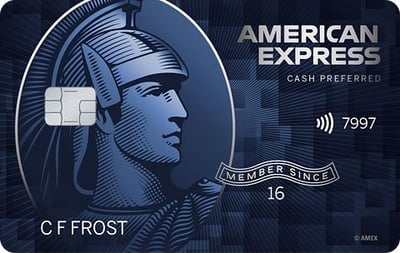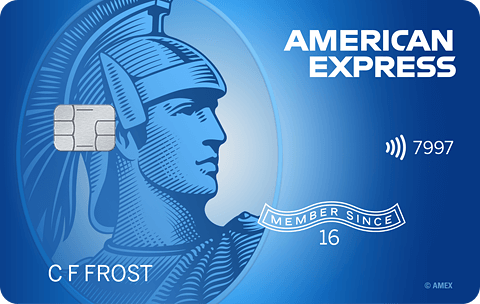Chase Freedom Flex vs. AmEx Blue Cash Cards: Flex Wins Out, Mostly
All three are quality cards that feature useful bonus spending categories. The Flex likely delivers the most value to the most people, with some exceptions.

Many or all of the products on this page are from partners who compensate us when you click to or take an action on their website, but this does not influence our evaluations or ratings. Our opinions are our own.
If you’re looking for big cash back from a credit card, chances are you’re considering the Chase Freedom Flex® or one of the two “Blue Cash” cards from American Express.
They’re all quality cash-back cards, so the question is, which to choose?
For most people, rewards for spending will be the deciding factor — although one card carries an annual fee, which is unusual for a cash-back card and will be a turnoff for some.
The short answer: The Blue Cash Everyday® Card from American Express is a fine card with useful bonus categories for earning extra cash. But it may not compete with the other two heavy-hitters in this cash-back trio.
And when it comes down to the other two cards? Big grocery shoppers might do better with the Blue Cash Preferred® Card from American Express over the long run — but it’s the one with the annual fee. Overall, we think the Chase Freedom Flex® has the best chance to offer the most value for the most people.
Here's how to decide which is right for you.
Earn a $200 Bonus after you spend $500 on purchases in your first 3 months from account opening.
Earn a $250 statement credit after you spend $3,000 in purchases on your new Card within the first 6 months. Terms Apply.
Earn a $200 statement credit after you spend $2,000 in purchases on your new Card within the first 6 months. Terms Apply.
5% cash back in quarterly rotating categories up to $1,500 in spending.
5% back on travel booked through Chase.
3% back on dining, including takeout and delivery services.
3% back on drugstore purchases.
5% back on qualifying Lyft services purchased through the Lyft app for all cardholders through March 31, 2025.
1% on all other purchases.
6% back at U.S. supermarkets on up to $6,000 per year in purchases (then 1%).
6% back on select U.S. streaming subscriptions.
3% back at U.S. gas stations and on transit (including taxis/rideshare, parking, tolls, trains, buses and more).
1% back on other purchases.*
Terms apply.
3% back at U.S. supermarkets on up to $6,000 spent per year (then 1%).
3% back at U.S. gas stations on up to $6,000 spent per year (then 1%),
3% back on U.S. online retail purchases on up to $6,000 spent per year (then 1%).
1% back on all other purchases.*
Terms apply.
0% intro APR on Purchases and Balance Transfers for 15 months, and then the ongoing APR of 18.49%-27.99% Variable APR.
0% intro APR for 12 months on purchases and balance transfers, and then the ongoing APR of 19.74%-28.74% Variable APR.
0% intro APR for 15 months on purchases and balance transfers, and then the ongoing APR of 19.74%-28.74% Variable APR.
3%.
2.7%.
2.7%.
The Chase Freedom Flex® is considered a cash-back credit card, but technically it earns points in a currency called Chase Ultimate Rewards®. Those points are worth 1 cent each when redeemed for cash back, but you'll have other redemption options, too. You can only redeem rewards you earn on the Blue Cash cards as cash back.
Why Chase Freedom Flex® wins for most
Rewards
The point of a cash-back rewards card is to rack up as much cash back as you can. For most people that will be easiest with the Chase Freedom Flex®. It offers:
5% cash back on up to $1,500 in combined purchases in changing bonus categories each quarter you activate.
5% back on travel booked through Chase.
3% back on dining, including takeout and delivery services.
3% back on drugstore purchases.
For all cardholders, through March 31, 2025, 5% back on qualifying Lyft services purchased through the Lyft app.
1% on all other purchases.
That gives you plenty of opportunities to earn cash back beyond the usual 1%. See below to get an idea of what the rotating categories have been lately.
By contrast, the Blue Cash Everyday® Card from American Express gives you fewer ways to earn bonus cash back:
3% cash back at U.S. supermarkets on up to $6,000 in spending per year.
3% cash back on U.S. online retail purchases on up to $6,000 in spending per year.
3% cash back on U.S. gas stations on up to $6,000 in spending per year.
1% cash back on other purchases.
Terms apply (see rates and fees).
A supersized version of that card is the real competitor. The Blue Cash Preferred® Card from American Express is fantastic for those who rack up large tallies at the supermarket, an area of large spending for many households.
6% back at U.S. supermarkets on up to $6,000 per year in purchases (then 1%).
6% back on select U.S. streaming subscriptions.
3% back at U.S. gas stations and on transit (including taxis/rideshare, parking, tolls, trains, buses and more).
1% back on other purchases.
Terms apply (see rates and fees).
While you could argue the Chase Freedom Flex® and the Blue Cash Preferred® Card from American Express have equally good bonus categories, the winner goes to the one without the annual fee. That’s the Chase Freedom Flex®.
Why? The Blue Cash Preferred® Card from American Express has a $0 intro annual fee for the first year, then $95.
You’d have to spend nearly $1,600 at supermarkets with the Blue Cash Preferred® Card from American Express just to break even on the annual fee.
New-cardholder bonus
The Blue Cash Preferred® Card from American Express and the Blue Cash Everyday® Card from American Express have respectable welcome offers for new cardholders:
Blue Cash Preferred® Card from American Express: Earn a $250 statement credit after you spend $3,000 in purchases on your new Card within the first 6 months. Terms Apply.
Blue Cash Everyday® Card from American Express: Earn a $200 statement credit after you spend $2,000 in purchases on your new Card within the first 6 months. Terms Apply.
But the decent sign-up bonus on the Chase Freedom Flex® requires less spending:
Earn a $200 Bonus after you spend $500 on purchases in your first 3 months from account opening.
Redemption options
Cash back is the best option for redeeming rewards with the two Blue Cash cards, but the Chase Freedom Flex® gives you room to get creative.
Its Chase Ultimate Rewards® points are worth 1 cent apiece as cash back, but several Chase cards give you a way to redeem them for greater value. When you transfer points from the Chase Freedom Flex® to the Chase Sapphire Preferred® Card, the Chase Sapphire Reserve® or the Ink Business Preferred® Credit Card, you can use them to book travel through Chase at potentially higher value. Points on these cards can also be transferred at a 1:1 ratio to about a dozen hotel and airline loyalty programs, including United Airlines, Southwest Airlines, JetBlue Airways, British Airways, Marriott and Hyatt. Depending on how you use transferred points, that could get you even higher value.
» MORE: What is the 'Chase trifecta'?
Why you might want a Blue Cash card
Less complexity
None of these cards is as simple as a flat-rate cash-back card, some of which offer 2% cash back or more on every purchase. But if you’re willing to remember bonus categories, they might end up being more rewarding.
However, bonus categories add complexity. The least complicated is the Blue Cash Everyday® Card from American Express, with just three bonus categories and no annual fee.
And while the Blue Cash Preferred® Card from American Express has four bonus categories — including one with a spending cap — at least they don’t change every quarter.
Spending with the Chase Freedom Flex® — which has rotating, temporary and permanent spending categories — takes more effort to optimize.
Supermarkets and gas stations
If groceries and gas are the bonus categories you’re most concerned with, the Blue Cash cards will give you more value in those areas over the long term.
Potential tie-breakers
If you’re still having trouble deciding, here are a few minor points of distinction.
0% intro APR period
Introductory APR periods can change often. Here are the current ones for easy comparison:
Chase Freedom Flex®: 0% intro APR on Purchases and Balance Transfers for 15 months, and then the ongoing APR of 18.49%-27.99% Variable APR.
Blue Cash Preferred® Card from American Express: 0% intro APR for 12 months on purchases and balance transfers, and then the ongoing APR of 19.74%-28.74% Variable APR.
Blue Cash Everyday® Card from American Express: 0% intro APR for 15 months on purchases and balance transfers, and then the ongoing APR of 19.74%-28.74% Variable APR.
Acceptance abroad
As a Mastercard, the Chase Freedom Flex® will be accepted at more places, especially outside the U.S., than the cards by American Express.
If you want to add more cash-back cards to your research, see NerdWallet’s picks for the best cash-back credit cards.
Which card should you get?
The Blue Cash Everyday® Card from American Express and the Blue Cash Preferred® Card from American Express are quality cash-back cards that will fit the needs of some people.
But we think the Chase Freedom Flex® is better for most people who are considering these types of cards. That’s because of its array of bonus categories, huge sign-up bonus and flexibility for redeeming rewards.
One idea: Use the Chase Freedom Flex® for grocery spending and gas when those are bonus categories. Then, add either the Blue Cash Everyday® Card from American Express or the Blue Cash Preferred® Card from American Express to continue to get elevated rewards for grocery spending, as well as on gas.
1x-8x
Points125,000
Points1x-5x
Points75,000
Points1x-8x
Points200,000
PointsFind the right credit card for you.
Whether you want to pay less interest or earn more rewards, the right card's out there. Just answer a few questions and we'll narrow the search for you.











